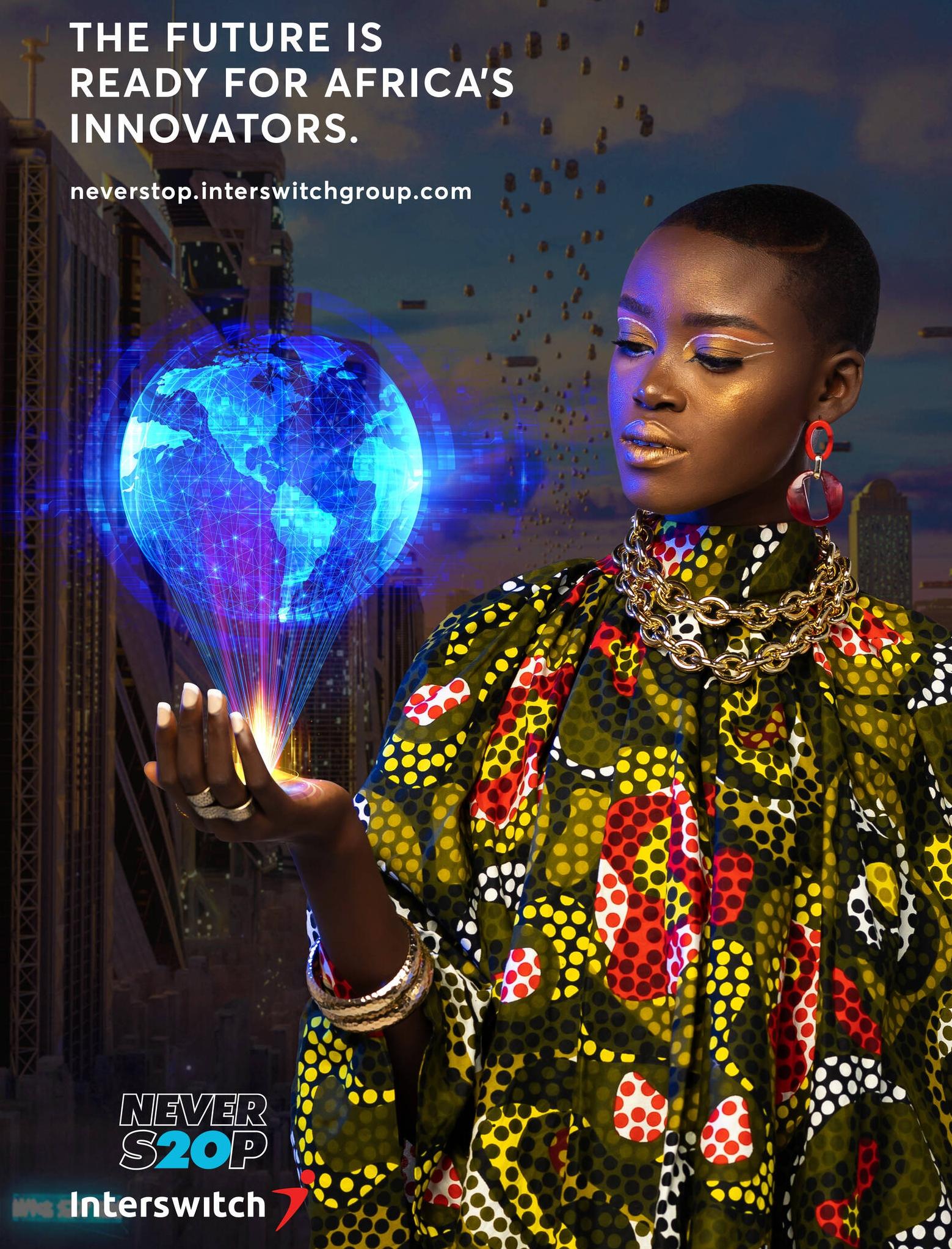Hocker








































When actual reality is getting sour more and more people are switching towards the realm of VR (virtual reality) and AR (augmented reality) to get a taste of new experiences. These are simply groundbreaking technologies through w h i c h o n e c a n e n h a n c e t h e i r r e a l l i f e environment.Through Virtual Reality, you can entirely exchange your surroundings with a virtual one and replace your environment with a simulated one.



Similarly, with Augmented Reality, you can augment your surroundings by adding digital elements to your reality throughdeviceslikesmartphones.
It is no surprise that this industry is booming right now. When much of the world became a hostage in their own house, VR and AR technologies provided an escape by allowing people to be in different realities than their own.Thus, it is only natural that AR and VR are champions in the entertainment sector, especially in the gaming industry. But it's not limited to just that. Other sectors like tourism, retail, and healthcare have slowly started incorporatingthesetechnologiesintotheirservices.
Virtual reality (VR) is a simulated experience that can be similar to or completely different from the real world. The technology aims to create a sensory experience for the user, sometimes including sight, touch and hearing. Augmented reality (AR) is an enhanced version of the real physical world that is achieved through the use of digital visual elements, sound, or other sensory stimuli delivered via technology. Mixed Reality (MR) technology brings you efficient and cost effective immersive solutions to solve your real-world industrial problems. The MR-Powered Wearable Goggles are capable of understanding the surrounding spaces and trigger
contextual digital infographics overlays on top of the physical environments. MR technology provides On-thejob assistance through interactive audio-visual guidance and remote support to the industrial workforce, which greatly increases production efficiencies by reducing errors.
As companies look to develop technology for the metaverse, where VR and AR technology will play a key role, the VR industry is growing at a fast pace. Experts believe the AR and VR industry, whose valuation was $14.84 billion in 2020, will go up to $454.73 billion in 2030. And it is safe to assume that it will only rise from there.While much Big Tech XR is still rumor and hype, sm






tive breakthroughs toward useful and entertaining computing. Applied VR and others are creating virtual reality experiences that have a significant impact on an increasingrangeofmentalhealthconditions.












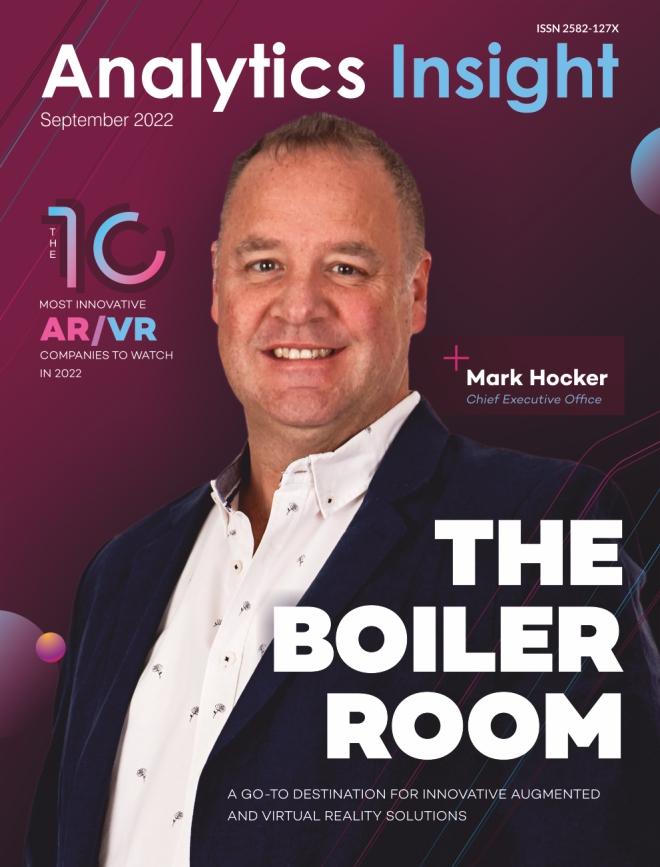









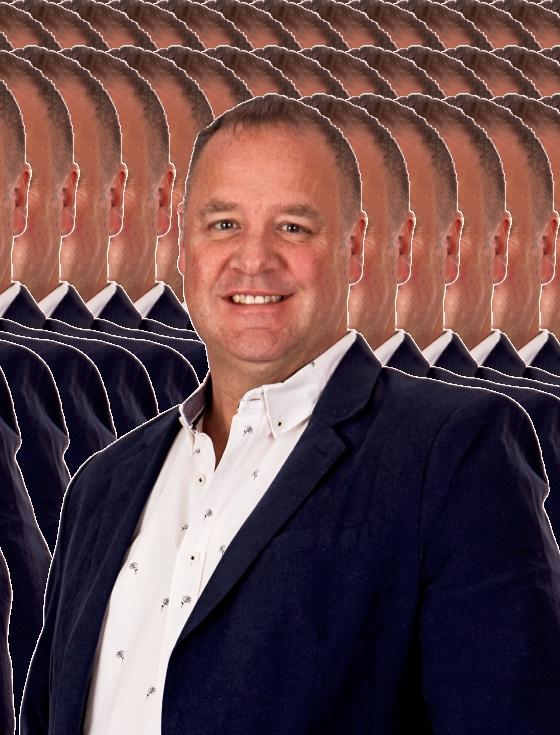






















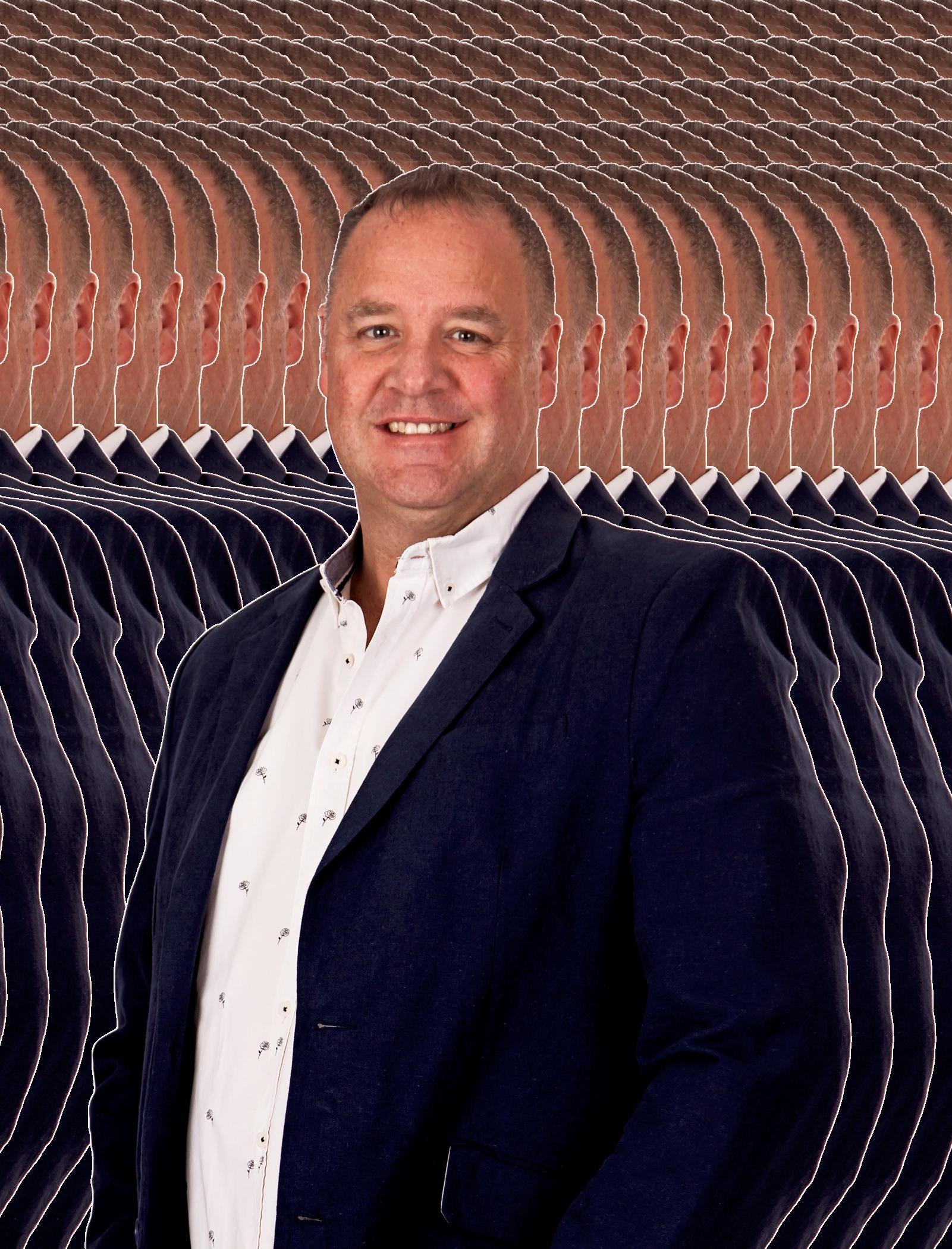
Owing to the rapid adoption of augmented and virtual technologies, global businesses are swiftly transforming conventional operation strategies as a means of survival in this ever-evolving, competitive market. AR and VR have emerged as the two spectrums of a complex market that can transform customer experiences. It is
redefining the natural way of interacting with objects and places. Nevertheless, there are several hindrances that these firms have to face to streamline cutting-edge solutions and serve the industry's end-users. Meeting these challenges and producing avant-garde solutions is The Boiler Room. Even though The Boiler Room is the oldest 3D animation company in
South Africa, it takes pride in recognizing itself for using some of the latest or yet-to-be-invented technologies to solve the training requirements of the clients in endto-end solutions. The company partners with its customers to find innovative solutions for complex industrial problems.
Mark Hocker is the Chief Executive Officer of The Boiler Room. Commenced in 1999 as a typical startup in Mark's garage, The Boiler Room started as an animation production company and quickly branched out to start using animations and video for one of its first learning clients SASOL (petrochemical and mining). Soon, Mark realized the potential use of AR and VR and how they could contribute to the learning space after which the company started investing extensively in this new
technology. The Boiler Room probably has the largest 3D library in the world. Its bespoke projects are developed faster and more costeffectively by using the assets from the library, which in turn benefits the clients. In addition to the library, the company's next big asset is its bespoke Unity framework. The framework, through scripts, allows users to drastically reduce the development time for standard activities, tasks, and environments in 'unity', again speeding up delivery for the client.
As an animator and programmer by trade, Mark's focus has always been on combining the art of animation with the available virtual reality technology. Although his roots lie in Australia, Mark believes that he has contributed to and grown animation
in South Africa. His passion has also extended to keep up with the latest trends and now fully includes all AR and VR technologies. Mark still gets personally involved in some of the research and development activities to date.
The Boiler Room creates many opportunities for individuals to enter the job market for the very first time as AR and VR juniors. With close to 100 staff across the group, the company actively participates in local and global events and

Disruptive technologies have enhanced and improved the AR and VR experience. Reporting is infinitely more detailed due to big data. Besides, Mark opines that AI provides enhanced experiences and assessments in the VR world by
As a specialist content development agency, The Boiler Room has partnered with several organizations globally, focusing on the end-to-end delivery and reporting of bespoke AR and VR experiences. Internally, the team
seminars, sharing in both thought leadership, as well as practical advances. Working collaboratively on a global basis, the company provides its client base with worldclass solutions and best practices.
autonomously engaging in the gameplay experience based on predictive analytics. Blockchain and photogrammetry have also been disruptive technologies that the company is extensively deploying in its operations.
constantly challenges itself with unique AR and VR experiences, and the standard response to clients with seemingly impossible requests is, “challenge accepted!” For over 15 years, The Boiler Room is yet to fail at this.
The Boiler Room has always been customer-centric, meeting clients' unique needs and delivering exceptional learning solutions, claims Mark. According to client feedback, some of its AR and VR experiences are AAA-rated. And these ratings translate into real return on investment for its clients! For example, one of the company's VR maintenance applications has achieved a reduction in unscheduled maintenance from 24 hours average
repair time down to 4 hours machine back in production. Besides, another global OEM that is using its maintenance application in the mining industry has achieved a 50% time reduction in maintenance tasks. Lastly, hot off the press, one of the leading platinum mines using Boiler Room's operator training has reduced time to competence by around 60% with an increase in machines trained on.
Working from South Africa, The Boiler Room team has often devised innovative solutions to address realworld challenges as not all hardware manufacturers are supportive towards the content. Besides, skills shortages in the AR and VR industry
have also been a hurdle for the company. To mitigate this, the team is investing in the future of AR and VR skills in South Africa and is actively cross-training 3D animators.
Mark states that due to quality, favorable costs, and innovative solutions, South Africa could soon become an AR and VR development destination. With a large number of multinational blue-chip clients, The Boiler Room will certainly become one of the largest production
companies on the continent, with innovative AR and VR solutions used around the world. With an office established in Australia and global resellers, The Boiler Room is well on the way to becoming a go-to destination for innovative AR/VR innovations.

The Boiler Room is the oldest 3D anima�on company in South Africa. It takes pride in recognizing itself for using some of the latest technologies to solve the training requirements of the clients in endto-end solu�ons. The company partners with its customers to find innova�ve solu�ons for complex industrial problems. The company has the largest 3D library in the world.
www.boilerroom.co.za
Founded in 2015, Visbit is a visual tech startup focused on intelligent transmission and playback technology for immersive media. With its patented Visbit View Op�mized Streaming (VVOS) technology, Visbit’s VR video player is the world’s first product that is capable to achieve 4K to 12K stream, live stream, and synchronically playback of 360-degree VR videos across VR, mobile, and web.
ZyenaLABS is an award-winning AR/VR and Gamifica�on based start-up that focuses in par�cular on technical and safety training in leading industries such as Avia�on & Aerospace, Transporta�on, Heavy engineering and Healthcare.
ZyenaLABS is also building a futuris�c Metaverse pla�orm called "SafeVerse" for complete safety training, and the Kogni�fPOD pla�orm, to serve VR in areas of educa�on, research, and disaster management.
www.zyenalabs.com
Umoove is the first-ever, pure so�ware, face & eye-tracking technology for mobile devices, without any addi�onal hardware needed. Umoove has created a unique technology built from the ground up, which has a�racted the a�en�on of many of the biggest companies in the world. With Umoove’s so�ware, any device can become capable of seeing the user and looking him in the eye.
SketchAR has made a remarkable place in the market. The app is used to teach drawing using AI-powered AR. It is a full-fledged tool to teach drawing while employing machine learning, and neural networks as well. SketchAR is an applica�on through which the user sees a virtual image on the surface of which they are planning to trace a sketch.
MetaVRse is on a mission to democra�ze educa�on globally by 2037. The company is building LearnOS, a new opera�ng system for future-proof learning that leverages exponen�al technologies like ar�ficial intelligence, 5G, virtual, augmented and mixed reality to deliver effec�ve, efficient training for organiza�ons and individuals around the world. It aims to change how organiza�ons and individuals transform exponen�al technologies. www.metavrse.com
Nian�c is the world’s leading AR technology company, sparking crea�ve and engaging journeys in the real world. Its products inspire outdoor explora�on, exercise, and meaningful social interac�on. The company’s mission emphasizes seeking and hiring diverse voices, including those who are tradi�onally underrepresented in the technology industry. This is also the team’s biggest mo�va�on and goal www.nian�clabs.com
Qualcomm focuses on enabling a world where everyone and everything can be intelligently connected. Users can interact with products and technologies made possible by Qualcomm every day, including 5G-enabled smartphones that double as pro-level cameras and gaming devices, smarter vehicles and ci�es, and the technology behind the smart, connected factories that manufactured your latest purchase. www.qualcomm.com
Magic Leap is crea�ng a powerful augmented reality pla�orm for enterprises. The company delivers impac�ul solu�ons for companies all over the world—helping them op�mize workflows, improve produc�vity, and increase ROI. Its AR technology enables global teams to collaborate remotely with co-presence, conduct be�er reviews aided by 3D visualiza�on, and offer real-�me remote exper�se to frontline workers.
Snap Inc. is a camera company. The company believes that reinven�ng the camera represents the industry’s greatest opportunity to improve the way people live and communicate. Snap Inc. aims to contribute to human progress by empowering people to express themselves, live in the moment and learn about the world. The company introduced technological services, like Snapchat, Spectacles, and Bitmoji.

The metaverse is at the top of the list of innovative technology ideas that have emerged during the past year The idea quickly attracted both fans and detractors since it raised more questions than it did answers. It's time to determine what the metaverse is if you haven't already joined one of the sides: is it a more evolved form of virtual reality or something else different? Without VR/AR technology, is it even possible? How does this work in your favor?Let'sproceedgradually
There has been ongoing discussion over what the term "metaverse" actually means and how it differs from what we already experience since since it became popular on the Internet.
The metaverse is essentially a virtual environment where people can communicate with one another through a variety of technologies. Hardware and software are used in tandem to achieve this. Although each business has a different vision for this idea, they all envision a network of 3D worlds that are producedinrealtimeandthatmanypeoplecanenteratonce.In the metaverse, you can work, learn, chat, relax, go to virtual concerts,andotheractivities.Itisdesignedtobeasimulationof therealworld.
However, the Metaverse is maintaining its integrity in its marketed form. According to Facebook, the Metaverse would combine real world and virtual worlds, allowing for peer-topeer, lifelike interaction in virtual workplaces. Collaborations would mimic actual situations where AR and VR components wouldbecombinedtoletpeopleexperienceconditionsthatare not constrained by the laws of physics (perhaps) On the metaverse, you might theoretically engage in any activity, includingtravelling,playing,working,andrunning.
Technology such as artificial intelligence (AI), augmented reality (AR), and virtual reality (VR) are all strongly tied to the concept of the metaverse (VR). With the use of augmented reality technology, you may incorporate virtual objects into the actual environment. To fully immerse yourself in a 3D virtual environment, VR uses 3D computer modelling, one of the most fascinating sorts of visual designs Although wearing a VR headset or other attachments isn't strictly necessary in the
metaverse, experts are sure that virtual reality technology will becomeacrucialpartofthenewenvironment.
For instance, the Facebook metaverse may be accessible through augmented reality glasses, virtual reality headsets, and in certain restricted ways through desktop and mobile applications.
The corporation has already disclosed that it is developing a high end virtual and augmented reality headset with the working title of "Project Cambria." According to Meta, the gadget will support mixed reality and have new sensors that enable the virtual avatar to maintain eye contact and replicate facial emotions of actual people. With the aid of more advanced technology, avatars will be able to better express human emotions and employ body language, giving the impression of realdialogueinvirtualenvironments.
The combined market for AR and VR is anticipated to be worth up to $300 billion by 2024 and $100 billion by 2030, as estimatedbyMorganStanley,accordingtoStatista.
Although the concept of the metaverse appears intriguing, it is difficult to predict what the future may hold for it The development of 5G and the rising popularity of VR and AR technologies may truly help to provide the right conditions for something like this. But there will be many difficulties for the metaverse'sdesigners.
One of them is the compatibility of digital objects, which are crucial to the development of the metaverse.Real-time data synchronisationisanothernecessityofthemetaverse,whichat scalecanbeverydifficultandexpensive.

The future of AR/VR businesses appears promising given how strongly the metaverse relies on these technologies.
Businesses that want to develop augmented reality applications or virtual reality features have a great opportunity of satisfying the market's expanding demand. By 2026, the global VR industry is projected to reach $184 66 billion, accordingtoMordorIntelligence.
VR/AR technologies are essential to the creation of metaverses,themarketislikelytoexpandrapidlyintheyearsto come. VR is a means of accessing the metaverse if it is a virtual environment.























Founded in 2015 and headquartered in Silicon Valley, Visbit Inc. is a visual tech startup focused on intelligent transmission and playback technology for immersive media. With its patented Visbit View-Optimized Streaming (VVOS) technology, Visbit's VR video player is the world's first product that is capable to achieve 4K to 12K stream, live stream, and synchronically playback of 360-degree VR videos across VR, mobile, and web with today's mobile chip decoding and network condition. Based on its technologies, Visbit offers full-scale SaaS and streaming/playback solution service for immersive media creators and enterprise users. The company serves thousands of customers acrossindustriesglobally Visbit was established with the original mission to revolutionize visual technologies. The company believes that visual technology will be more and more important

in the future world and the founders specialize in visual technology for decades Knowing the trend and its strength, Visbit was set up with a high-level mission statement that aims to revolutionize how people capture and consume visual information by developing the nextgenerationofvisualtechnologiesandproducts. Following the dream formed during the founder Dr. Changyin Zhou's Ph. D period, Visbit started its journey in VR. The founding team very soon identified a critical issue for VR which was the poor user experience caused by the video transmission capability and playback quality issue,andthensetagoaltosolvethisproblem.
Dr Changyin(CY)Zhou,Co-founder,andCTOofVisbit,is a computer vision scientist and entrepreneur with more than a decade of experience in envisioning and
“
“Visbit was established with the original mission to revolutionize visual technologies. The company believes that visual technology will be more and more important in the future world and the founders specialize in visual technology for decades."
Dr. Changyin Zhou Co-founder, and CTO Visbit
developing new cameras and vision technology to make the most optimal user experience possible. With indepth knowledge in image/video processing and computational photography, Dr Zhou founded Visbit to continue pushing the boundaries of his research and building the next-generation visual products to improve people'sworkandlife.
At Visbit, Dr. Zhou has been leading the R&D, engineering, and product development efforts
Combining cutting edge computer vision, computer graphics, image processing, and machine learning technologies, he developed the core technology of Visbit
— View-Optimized Streaming (VVOS) as well as a series of pioneering products in VR processing and playback area, including the Visbit transcoding and playback system that is capable to achieve 12K resolution playback and streaming, 8K resolution live streaming, and 8K resolution synchronized playback across VR headsets and mobile. These contributions made Visbit a leadingvisualtechnologycompanyintheVRworld.
Before Visbit, Dr Zhou worked at Google X Lab (moonshot factory) as a Senior Software Engineer as well as at Google Research as a Senior Scientist. At Google X Lab, he was one of the founding members of the Gcam team and worked on projects including the Google Glass camera, Android camera HDR+ mode, and other stillconfidentialcomputationalcameraprojects.
Dr Zhou holds a Ph D in Computer Science from Columbia University as well as over 20 patents in the field. He has published articles in leading academic journals and has given speeches at almost all of the top tier computer vision/graphics conferences, including Siggraph,ICCV,CVPR,andICCP
According to Dr. Zhou, two main complaints to VR video experience since its birth are 1) the video resolution is
low therefore everything looks pixelated, 2) the lag in head movement and video rendering speed therefore viewers may feel dizzy and couldn't watch for a long time. To make VR viewing experience equal to viewing a 720p regular video on mobile, the company needs to render and display 360 degree VR videos at least at 8K resolution. This requires every step from video production to transcoding, distribution, playback and display all meeting the 8K standard. Although camera, post-production software, and VR headsets today are all capable to meet this standard, the major bottlenecks are the network speed as well as the mobile device's decoding capability which are only capable to deliver up to 4K resolution VR videos. Yet 8K is just a starting point forVR.
At Visbit, the team designed Visbit's View-Optimized Streaming (VVOS) technology to solve the above two bottlenecks. Instead of streaming the entire 360º video at high resolution, this technology only streams what the user is viewing. As a user turns, Visbit's technology seamlessly adjusts the high resolution and low resolution views, leaving no room for latency Through years of effort (see image below), the team finally enabled VR video content creators and publishers to produce and distribute up to 12K resolution VR video overWi-FiandLTE.























Umoove is the first-ever, pure software, face & eye-tracking technology, for any mobile device without any additional hardware needed. Umoove has created a unique technology (with 6 patents granted and more pending), built from the ground up, which has attracted the attention of many of the biggest companiesintheworld.
With Umoove's software, any device can become capable of seeing the user and looking him in the eye. This opens many new possibilities in a range of markets such as healthcare, security, gaming, e commerce, VR/AR, advertising, automotive and more. Umoove can be easily integrated to enhance various existing apps as well as be thedrivingtechnologyforentirelynewapplications. One of the Umoove's unique products is DevicelessVR. This solution can finally make VR accessible to massmarket for everyday use. It allows users using an app or browsing the web to immerse themselves in a VR-like experience without putting on a headset at all. This magic
is achieved by changing the content on the screen based on the user's movements, creating an illusion of looking around a 360 environment. So, virtual tours of property and stores, 360 videos and more can all be part of the regulareverydaycontentconsumption.
Umoove has been used commercially by millions of users and today works with various partners to bring more Umoovepoweredappsandexperiencestothemarket.
Umoove was founded in Jerusalem back at the end of 2010. The company had been exposed to the power and potential of eye tracking being used then, mainly by researchersandALSpatients(oratleastthosewhocould affordtheveryexpensivedevice).
At that time, the first smartphones with front-facing cameras began to appear in the market. Everyone was excited about the touch interfaces, but Umoove had begun thinking about the next step. What if, it could bring

“
"Umoove has been used commercially by millions of users and today works with various partners to bring more Umoove powered apps and experiences to the market."
Yitzi Kempinski CEO Umoove
eye tracking to any device, take it out of the labs and into the real world, the use cases it thought of were endless. So, the company started on its journey. It studied the technologies and methods that were out there and then tried to optimize them for use on a mobile device (well a 2010 mobile device). When Umoove ran that first version of the device, it just froze and had to be restarted, as the requirements of this type of tracking technology, using the common approaches, were far more than the devicescouldhandle.
At that point, Umoove realized that it would need to either give up or reinvent a new approach to face and eye-tracking that would be built for this low quality, unstable and limited resource environment. As stubborn Israeli entrepreneurs, giving up was not an option, and the company took the long route of many years of building an entirely new mobile focused technology bringing it to where the company is today with its lightweight, pure software, robust tracking technology, used bymillionsofusersglobally.
Umoove's CEO Yitzi Kempinski is a self-taught engineer who has been building and innovating in tech for 20 years since establishing his first company in high school. At the time when Umoove was founded, he had no background in computer vision, he has since filed and been granted multiple patents in this space and has become a guest speaker in conferences as an expert and leading innovatorinthisspace.
UmoovesolutionsinAR/VRissplitbasicallyintotwo: 1. Enabling companies to integrate eye tracking into their AR/VR devices/solutions, opening up many powerful possibilities.
2. DevicelessVR As mentioned above, this breakthrough product enables experiencing VR content on any screen in a very natural way without the need for a headset. This enables VR to reach mass market for everydayusecases.
As the new-age mechanisms have taken over the world and advancing in varied industries, Yitzi believes that disruptive technologies enable AR/VR to gradually move from an entertaining gimmick to a solution solving real problemsandopeningupnewpossibilities.
With new experiments come new challenges and those can be solved by an innovative approach. Innovation is the key to thrive beyond hurdles today and achieve the unachievable. According to Yitzi, Umoove technology was built from scratch, ground up, to solve the major technological challenges in bringing a face and eye tracking to the real world environment without any dedicatedhardware.
The company has been recognized by Forrester as one of “5 Pioneer Vendors Reinventing Human Computer Interaction”. It was listed by Forbes as one of 10 Health tech companies changing the world” and by Inc as one of “10companieshelpinghumanity”
Forbes has named Umoove under “5 most disruptive innovations at CES 2015” while iNNOVEX Disrupt 2015 recognized the company as one of “8 most innovate companiesinIsrael”.
When Umoove's first demo app launched, without spending a dollar on PR, it reached over 100K downloads in a few days. Social networks, blogs and press coverage showed great user excitement with titles such as “The coolest iPhone game you have to download right this second” or “One of the most exciting innovations to hit iOSdevicesinages.”
Commenting on the Future, Yitzi believes a majority of dedicated AR/VR devices providing full immersive experiences will be focused on providing important but niche solutions, whereas partial AR/VR experiences, will become more and more integrated into people's every day.


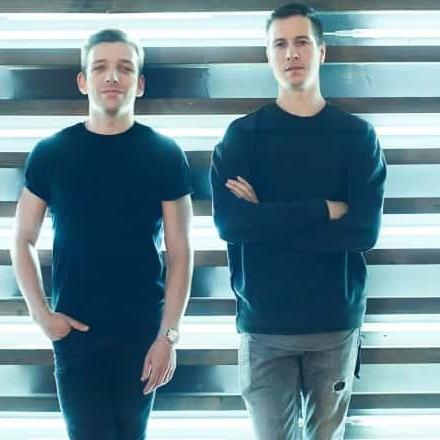






















Augmented reality and artificial intelligence are certainly quite distinct technologies, but their merger brings unique experiences in the world. In AR, a 3D representation of the world is built enabling digital objects to exist alongside physical ones. Through the boon of AR, a number of applications have come into the light of mainstream market. The technology may sound futuristic but it can be simply employed. A number of companies have even created AR toolkits to make it moreaccessibleanddeveloped.
Emerging from the lap of augmented reality possibilities, a mobile app, SketchAR has made a remarkable place in the market. The app is used to teach drawing using AIpowered AR. It is a full-fledged tool to teach drawing while employing machine learning, and neural networks aswell.
SketchAR is an application through which the user sees a virtual image on the surface of which they are planning to trace a sketch. In one hand, the user holds a phone and sees a virtual image, while the other hand traces virtual lines already on the paper. The application uses technology based on computer vision that allows users
to scan the environment and fix the virtual image over a real surface. SketchAR is useful to all those who have always wanted, but could not draw. Also, the app is helpful for professional artists, as a simple and convenientwaytotracesketchestothedesiredsurface.

The Founder of SketchAR Andrey Drobitko and Co Founder Alexander Danilin first met in 2006. The year 2011 saw the creation of their first company – a mobile technology for publishers. Publishing houses including Burda UK, Hearst Shkulev, Buro24/7, and Mail.ru used the technology. Moreover, one of the affiliated products wasawarded'Bestof2015-AppStore.'byBigMag.media. After a few years, custom news apps started to lose the battle to social network feeds. The business model based on revenue share from advertising started to be ineffective.
At the same time, working artist Andrey was dreaming about an old idea from 2012 – an AR-app designed to make the process of drawing easier. Both the founder's background and experience in tech and art enabled a
“SketchAR builds the most powerful assistant for creativity powered by AI."
Yitzi Kempinski CEO Umoove
newchaptertoemerge–SketchAR.
SketchAR's team consists of very talented passionate researchers, engineers, designers, and artists and they know how to combine technology and science with art, andhowtocreatenewopportunitiesforpeople.
The initial idea was as a tool for professional artists, but earlier through research, the team discovered that for those looking to get new life skills 'learn to draw' is one of the most frequent search queries. It compared 'learned to draw/sing, dance, and even fight' The company is going to build the most powerful assistant for creativity powered by AI. SketchAR already uses machine learning and neural networks to analyze everything that a smartphone camera sees on paper, to give users very personalizedadvicefordrawing.
Andrey Drobitko, the Founder and CEO of the company is a very passionate and influential person, immersive technology expert, and designer. He is a multidisciplinary artist and has been included in top 15 mural artists in Russia. Also, Andrey is the member of The International Academy of Digital Arts and Sciences (IADAS) and InternationalFederationofArtists(UNESCO).
According to Andrey, the main problem for artists, and especially for people generally when starting drawing is 'the fear of a white canvas'. With augmented reality, one can make the first step easier In this way, the company offershopetopeople.
The second thing is the technology SketchAR created for the product, which will be used not only for SketchAR but computer vision industry as a whole called Markerless CV tracking where one doesn't need any markers to placeavirtualsketch/objectontoareadsurface.
Moreover, the company offers a brand-new effective way to promote products using augmented reality. For
example, SketchAR extended this experience when cooperating with Universal Pictures at the new Grinch movie premiere in Paris. A lot of kids and parents tried drawing their favorite characters on a wall using SketchAR. The company offers a complex integration of brands into the app to bring a totally new experience to brands'customers.
SketchAR builds the most powerful assistant for creativity powered by AI It already uses machine learning and neural networks to analyze different types of objects including paper, hands, surfaces, etc. (which smartphone camera can see) to give users intensely personalizedadvicetoenhancetheirdrawingskills.
As previously mentioned, SketchAR product is attractive from two sides: as a clear and useful use case for customers of how to use AR daily, and the most powerful computer vision solution on the market to detect flat surfaces by the smartphone camera Markerless Tracking. These two factors are the key point of interest from companies like Huawei, Samsung, Universal Pictures with whom SketchAR has already partnered with. They are eager to bring new products and tools to their customers, simultaneously promote the company worldwide.
SketchAR was awarded as 'The Best Use of Augmented Reality in 2018 by Webby Awards – 'Oscar' for digital products, listed as one of the best AI companies in Eastern and as the Best AR-app by WIRED, TechRadar, DigitalTrends,ProductHunt,andmanymore.
But according to Andrey, the best 'award' for the company is the loyalty of its customers, and how many exciting artworks they make using SketchAR and augmentedreality.
Although AR and VR are often used in the same phrase, there are differences between both technologies. Augmented reality refers to the projection of virtual information to enhance the viewer's native environment. On the other hand, virtual reality is used to refer to technology that transposes a viewer into an entirely simulated environment altogether. Regardless, augmented reality and virtual reality both center around creating an immersive digital experience for the user. They bring real, measurable benefits to companies looking for ways how to accelerate business growth, as well as other key metrics like conversion rates, retention rates, and profit margins.
The most straightforward application of AR/VR would be to use them as part of marketing strategies. Social media platforms like Facebook already have in place
the ability to publish augmented reality ads. Additionally, these immersive experiences help boost brand awareness, visually differentiate a business from competitors and make engaging with customers a possibility in the age of social distancing. Google is also rolling out a “view in 3D” mobile search result feature for e-commerce platforms. Provided your product is optimized to rank high enough on search engine result pages, this will allow consumers to use augmented reality to view your product as if it were right before their very eyes.
The use of augmented and virtual reality technologies allows businesses to not only connect with techminded job candidates but also attract talent from a rising pool of working millennials–many of whom may find themselves more at home in digital settings. Using VR or AR as part of the hiring process allows companies
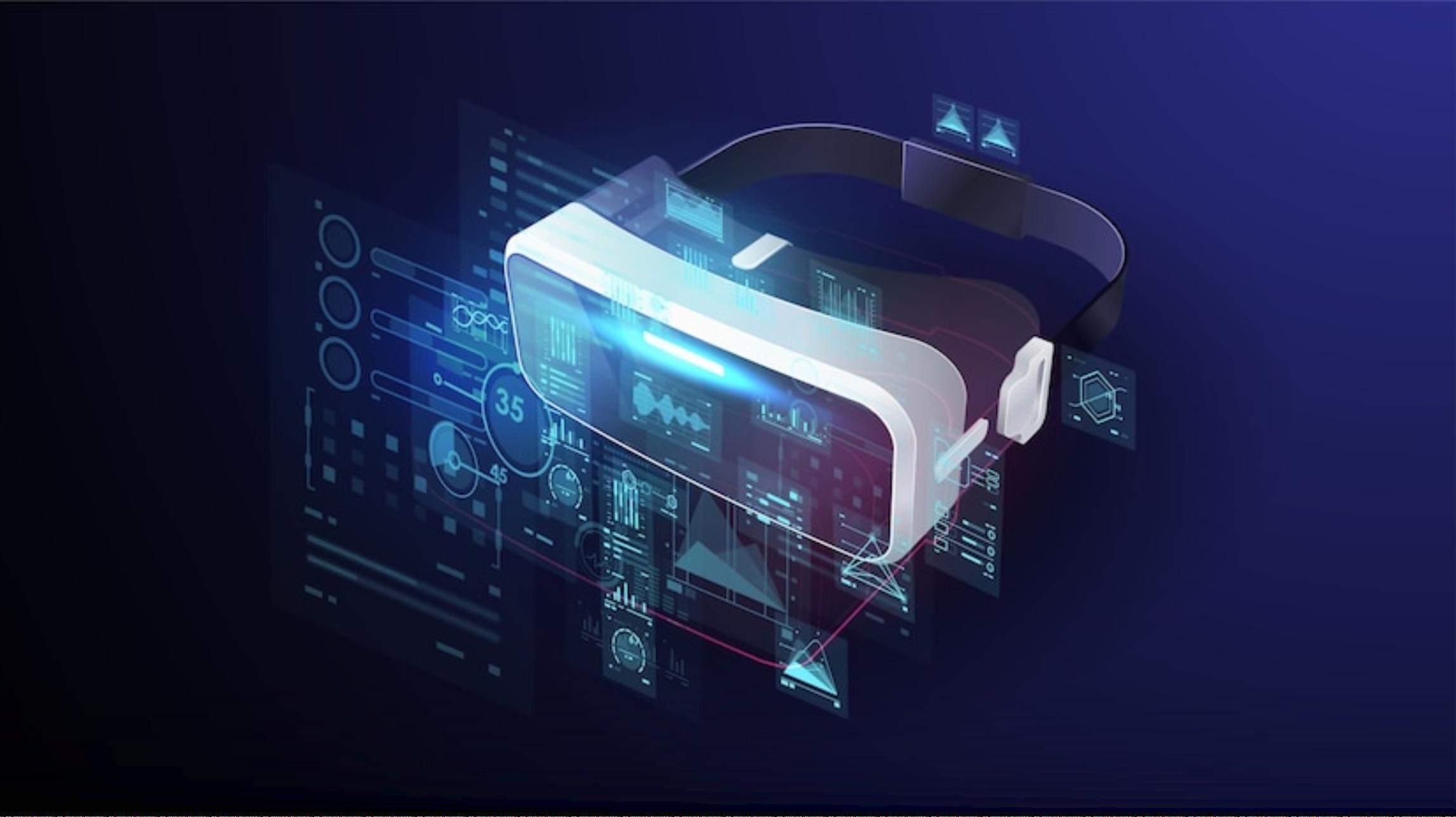
to put complex, and otherwise unobservable concepts in plain sight. For example, a healthcare tech company may want to simulate the way their revolutionary technology works in the human body.
If the job requires employees to be based in a vastly different environment, immersive technology can also provide candidates with “first-person” insight into the setting of their possible workplace and living environment. This streamlines the hiring process and helps the candidate to manage their expectations and gain a greater understanding of their job scope and suitability for the position.
Although AR/VR is presently most well known as a customer engagement tool, these technologies can also be used to enhance the workplace experience and boost employee engagement. As an employee initiation
tool, virtual and augmented reality can be used to simulate on-site scenarios to allow employees to learn new skills without logistical or locational difficulties, or real-time pressure from customers or managers. The use of AR/VR for employee training becomes even more attractive with jobs that pose certain risks, allowing new employees to practice their tasks without fear of harm or injury. Additionally, AR can also be used to subsidize training costs. While an initial investment in specialized gear is often necessary, things like AR/VR headsets or even mobile apps are reusable and will offset the costs needed for guided lessons or training seminars.
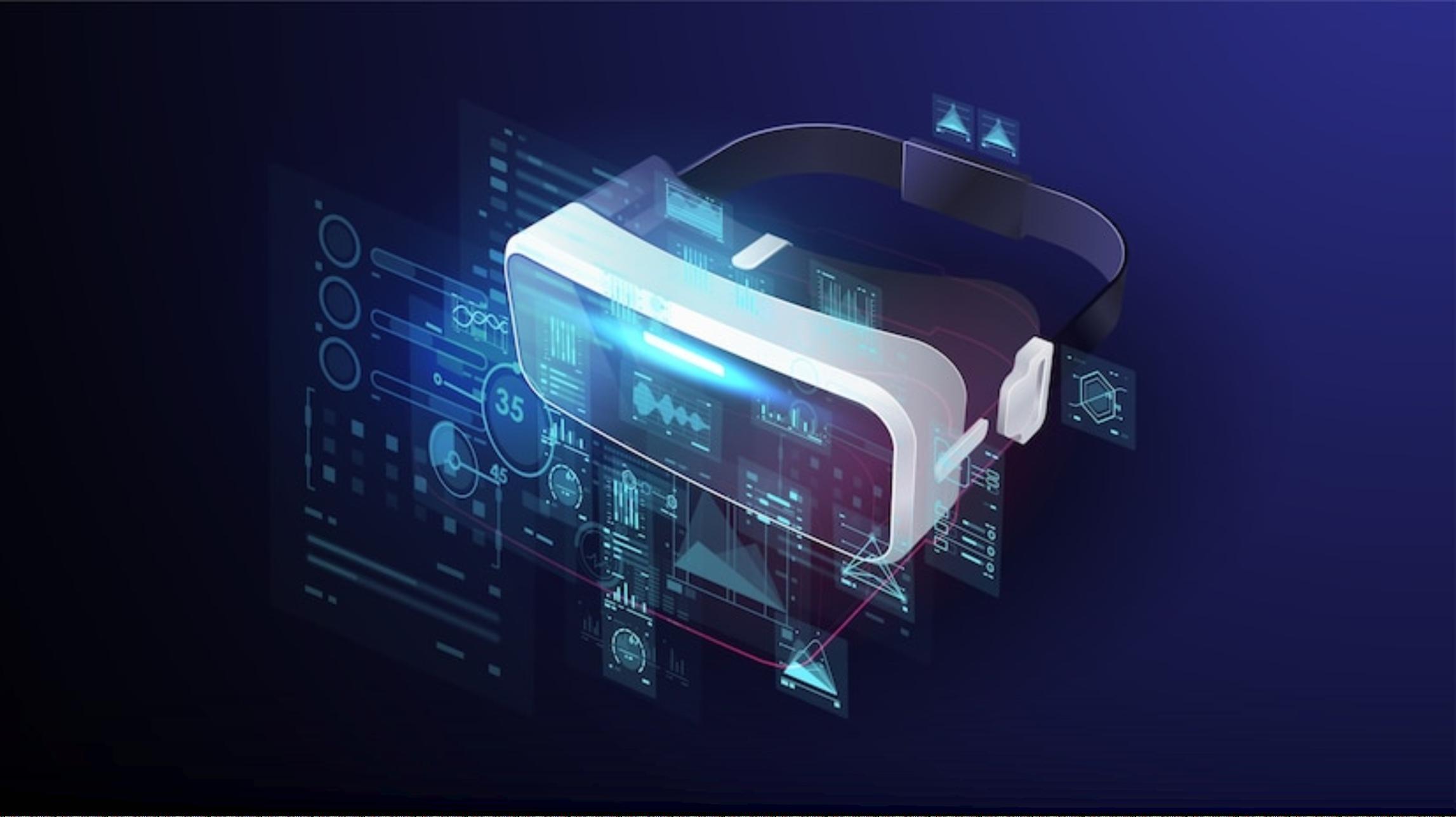























MetaVRse is on a mission to democratize education globally by 2037. The company is building LearnOS, a new operating system for future proof learning that leverages exponential technologies like artificial intelligence (AI), 5G, virtual, augmented and mixed reality (XR) to deliver the most effective, efficient training for organizations and individuals around the world. It is a family of companies allservingonemissionandvision:
MetaVRse–Exponentialenterprisetraining
LearnOS–Operatingsystemforfuture-prooflearning
XRIgnite–Communityhubandvirtual-accelerator XRforBusiness–Newsaggregator,podcast,book Additionally, MetaVRse aims to change how the world's organizations and individuals learn, train and transform using exponential technologies. The company's values comprise of Human-First design, ROI-driven, Relentless innovation, Transparency, Accountability, Honesty, Openness,andRespectforeverypersonontheplanet.
MetaVRse was formed in 2016 with a long-term vision of creating a new scalable system for learning that could be provided at low cost. Since inception, the company has created many world 'firsts' including; VR Photobooth, WebAR, ARPortal and 360° video platform. With each innovation, its team became more adept at building technologyfast.
MetaVRse's primary goal is enterprise training with a focus on employee on-boarding, retail sales enablement, soft skills, employee health and safety, and hands-on training.
The Founders of MetaVRse, Alan & Julie Smithson have been working together for over 15 years and married for 20. They have built many successful companies and have a joint vision to use XR and AI to deliver the best educationpossible.

Alan Smithson, MetaVRse's CEO is the host of the XR For Business Podcast and a mentor for Techstars and TKS, a program for youth to explore exponential technologies. Alan is a Top LinkedIn Influencer in XR (>1M views per month), SXSW XR Advisor, IEEE Mixed Reality Ethics Committee member, Auggie Awards Judge. He is also a TEDxkeynotespeakeroneducationandtechnology.
Julie Smithson, MetaVRse Founder is the Director of XR Ignite, Co-President of VR/AR Association (Toronto), 5G and Education Committee Chair and global evangelist for XR and Education. She is also a keynote speaker on educationandtechnology.
Leveraging AR/VR Technology to Develop Better Service
“SketchAR builds the most powerful assistant for creativity powered by AI."
Yitzi Kempinski CEO Umoove
MetaVRse is creating a new platform that leverages all new technologies (VR/AR/AI/5G/Blockchain) to deliver the best possible learning, training, and education.
Working with Fortune 500 companies, MetaVRse helps organizations develop internal teams to create content that drives real ROI. Most projects are currently in the pilot or proof-of-concept (POC) phase, but preliminary results are showing 25 100% improvements over traditionaltrainingsystems.
In the next 10 years, over half of all jobs will be completely new. With rapid advances like 5G and cloud/edge computing, people will move towards a world where the computer screens will break free of the confines of the rectangle screen and the world will be visualized in 3D in context to the world around you.
Processing power will be shifted from 'on-device' to 'oncloud' which will make spatial computing more powerful, lessexpensiveandmorescalable.
AI is giving rise to a new renaissance where it is no longer about what one knows because Google provides the entire world's knowledge in a few clicks The new economy will be based on how people use the knowledge to deliver results. This is where virtual, augmented and mixed reality (XR) combined with 5G edge computing will give real-time context to the world around people allowing humans to become more effective at nearly everythingtheydo.
MetaVRse is focused on long term, strategic partnerships that leverage the collective strengths of many companies to deliver on the mission to 'democratize education globally by 2037'. They believe that the best inventions are yet to come and if the industry can help startups leverage their strengths to build better products and help corporations work with these startups more effectively, it can change the world together. This is why MetaVRse started XR Ignite, a community hub and virtual accelerator to bring the
community together and XR For Business to educate the business world about how to leverage these technologies.
Since 2016, MetaVRse has been nominated for VR Startup of the Year, Startup of the Year, accepted to the Museum of the Future Accelerator (Dubai), Named TechWeeks's Top 100 Startups, delivered over 75 XR projects and become a formidable brand within the XR space.
In 2019, XR Ignite community hub and virtual accelerator were formed to foster rapid growth in the industry with over 60 of the world's top XR/AI mentors. XR For Business is a podcast and news aggregator that has interviewed more than 80 industry leaders who are leveraging XR technologies to improve business from retailtotraining.
MetaVRse envisions VR/AR/XR/AI becoming part of everyday life. Everyone will wear glasses by 2025 that create a new digital layer of data all around them giving every person super-human abilities. Until that time, the company is working on the building blocks that drive innovation forward. Using VR to train people is the most efficient means of education ever created and when it is combined with advanced AI algorithms to deliver this learning in a hyper-personalized, contextual way, once can create a world where every human has the opportunitytosolvetheplanet'sbiggestchallenges.
Over the next 10 years, more wealth will be created than the entire previous human history. The issue is that this wealth will continue to become disproportionately distributed to fewer companies, people and organizations MetaVRse believes that by using exponential technologies to empower every human, they can level the playing field and create a collective mindset that acts in a socially, economically and environmentally sustainableway.ThisisMetaVRse'svisionforthefuture.


